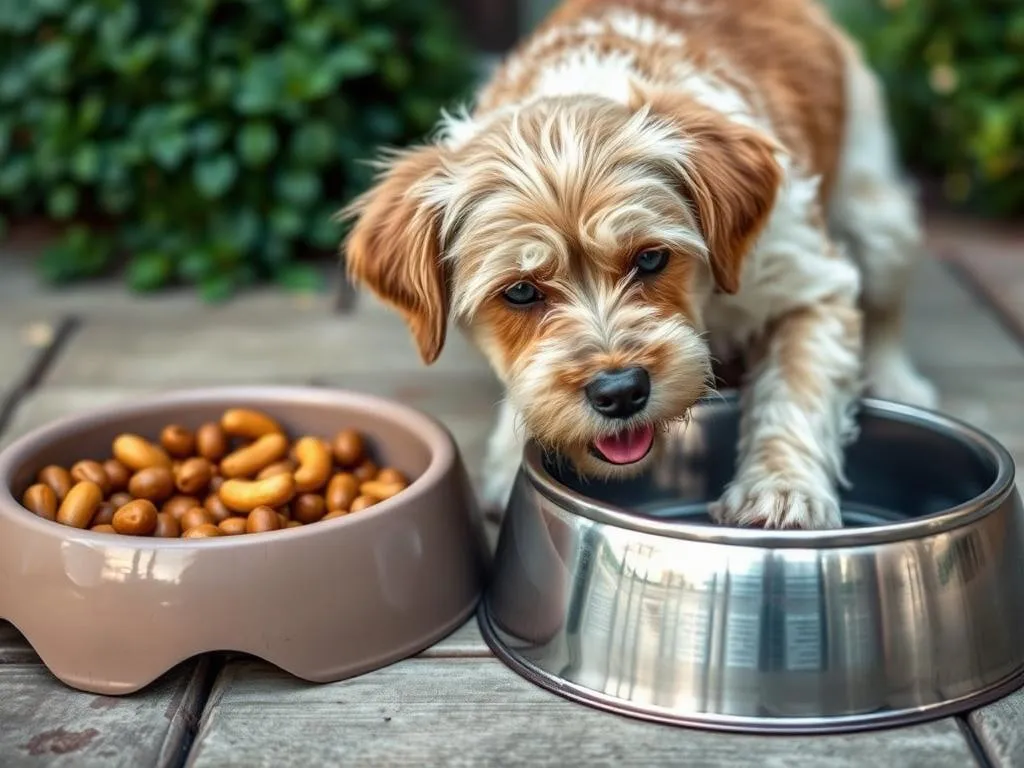
Choosing the right dog bowl is crucial for your pet’s health and wellness. The plastic vs metal dog bowls debate is a common one among pet owners, and each material has its distinct advantages and disadvantages. This article will help you navigate the complexities of these materials, focusing on their pros and cons, so you can make an informed decision that best suits your dog’s needs.
Understanding Dog Bowls
Types of Dog Bowls
When it comes to dog bowls, various materials are available, each offering unique benefits and drawbacks. Some common types include:
- Plastic Bowls: Lightweight and often colorful, they are popular for their affordability.
- Metal Bowls: Known for their durability, they are resistant to scratching and bacteria.
- Ceramic Bowls: These bowls can be aesthetically pleasing but can chip easily.
- Glass Bowls: Heavy and easy to clean, glass bowls are less common but offer a premium feel.
Each material has its pros and cons, making it essential to consider factors such as your dog’s behavior and any specific health needs.
Importance of Dog Bowl Material
The material of a dog bowl can significantly affect your pet’s health. For instance, some dogs may have allergies or sensitivities to specific materials. Additionally, the weight and stability of the bowl matter, especially for larger breeds that may push their bowls around during feeding. Finally, the size of the bowl in relation to your dog’s eating habits is also vital; a larger bowl may be necessary for slobbery eaters or larger breeds.
Plastic Dog Bowls
Pros of Plastic Dog Bowls
Plastic dog bowls are a popular choice for many pet owners due to several advantages:
- Lightweight and Portable: Easy to carry, making them ideal for travel or outdoor activities.
- Cost-Effective: Generally less expensive than metal bowls, allowing you to buy multiple styles without breaking the bank.
- Variety of Colors and Designs: These bowls come in numerous colors and designs, allowing you to match them with your home décor or your dog’s personality.
Cons of Plastic Dog Bowls
Despite their benefits, there are notable drawbacks to plastic dog bowls:
- Scratching: Plastic can scratch easily, creating crevices where bacteria can thrive.
- Chemical Leaching: There are concerns about harmful chemicals, such as BPA, leaching into food or water.
- Durability Issues: Over time, plastic bowls may warp, crack, or fade, necessitating replacement.
Maintenance and Care
To keep your plastic bowls in good condition:
- Regular Cleaning: Wash plastic bowls with hot, soapy water or place them in the dishwasher to eliminate bacteria.
- Inspection: Check for scratches and wear. If you notice significant damage, it may be time to replace the bowl to prevent health risks.
Metal Dog Bowls
Pros of Metal Dog Bowls
Metal dog bowls have gained popularity for several compelling reasons:
- Durability: They are long-lasting and can withstand the test of time, making them a worthy investment.
- Easy to Clean: Metal bowls can be easily sanitized, reducing the risk of bacterial growth.
- Scratch Resistance: They are resistant to scratches, minimizing the likelihood of bacteria accumulating in crevices.
- Weight: Heavier than plastic, they are less likely to slide around during feeding, providing a more stable experience for your dog.
Cons of Metal Dog Bowls
While they offer numerous benefits, there are also some downsides to metal dog bowls:
- Higher Cost: Generally, metal bowls are more expensive than plastic options.
- Temperature Retention: They can get hot or cold, which may affect your dog’s food or water temperature.
- Noise: Some dogs are sensitive to sound and may dislike the clattering noise when they eat from metal bowls.
Maintenance and Care
To maintain your metal bowls:
- Regular Cleaning: Clean with hot, soapy water or in the dishwasher. Ensure they are thoroughly dried to prevent rust.
- Rust Prevention: Store in a dry area and avoid prolonged exposure to moisture to minimize the risk of rust.
Health Considerations
Allergies and Sensitivities
Some dogs may have allergic reactions to specific materials, notably certain plastics. If your dog shows signs of irritation or allergies, consider switching to a different material. Always consult with your veterinarian if you suspect a material sensitivity.
Bacterial Growth and Hygiene
Bacterial growth can be a pressing concern. Studies indicate that plastic bowls might harbor more bacteria than metal bowls due to their ability to scratch and retain moisture. Regular cleaning is essential, regardless of the material, to minimize health risks.
Safety Standards
When selecting a dog bowl, look for safety certifications that indicate the product meets health and safety standards. Brands that comply with regulations are often marked as BPA-free, ensuring that harmful chemicals are not present.
Cost Considerations
Initial Investment
When comparing initial costs, plastic dog bowls are typically less expensive than their metal counterparts. This can be appealing if you’re on a tight budget or looking to buy multiple bowls for different locations in your home.
Long-term Value
Consider the long-term investment of each material. Metal dog bowls may require a higher upfront cost but can last significantly longer, making them more cost-effective in the long run. Plastic bowls may need to be replaced more frequently, especially if they show signs of wear.
Aesthetic and Style Choices
Design Options
Both plastic and metal dog bowls come in various designs, allowing pet owners to express their style. From modern and sleek to whimsical and colorful, there’s no shortage of options. Customization is also available, with some brands offering personalized designs.
Matching Home Décor
When selecting a bowl, consider how it fits into your home aesthetics. Opt for colors and designs that complement your existing décor, creating a seamless look in your living space.
Conclusion
In the plastic vs metal dog bowls debate, both options have distinct advantages and disadvantages. Plastic bowls are lightweight and affordable but may harbor bacteria and chemicals. Metal bowls are durable and easy to clean but can be more expensive and noisy. Ultimately, the best choice depends on your dog’s specific needs and your lifestyle.
Consider factors like your dog’s eating habits, any health concerns, and your aesthetic preferences when making a decision. Remember, the right bowl can contribute to your dog’s overall health and happiness.
FAQs
What is the best material for dog bowls?
The best material depends on your dog’s needs. Metal bowls are often recommended for their durability and ease of cleaning, while plastic bowls can be suitable for lighter, more portable options.
How often should I replace my dog’s bowl?
Replace your dog’s bowl if you notice significant wear, scratches, or if it becomes difficult to clean. In general, plastic bowls may need to be replaced more frequently than metal bowls.
Are there specific bowls for puppies vs. adult dogs?
Yes, puppies often need smaller, shallower bowls to accommodate their size, while adult dogs may benefit from larger bowls designed for their breed and eating habits.
Can I use human bowls for my dog?
While some human bowls may be safe, it’s best to use bowls specifically designed for pets to ensure safety and hygiene.
Choosing the right dog bowl is a significant decision for pet owners. Understanding the pros and cons of plastic vs metal dog bowls can help you make the best choice for your furry friend.









